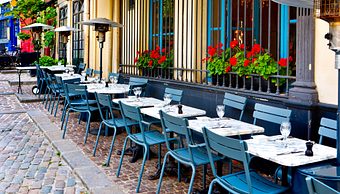the Restaurateur
4 Ways Your Restaurant can Trim Energy Usage this Summer
July 31, 2015Are you a restaurant owner looking to save on energy this summer? Pay attention to four key areas where you can adjust practices to conserve energy and save money.
It’s no secret that restaurants use a lot of energy both in the winter and summer months, and rake up some significant bills as a result. Studies have shown that restaurants use more than 5 times more energy per square foot than other commercial buildings. So, how can you cut costs while keeping your business running well and bringing customers in? Thankfully there are a few ways you can trim your restaurant’s energy consumption.
4 areas where you can save
- Air conditioning- Put air conditioning on cycles so that it is not constantly running. Shut down air conditioners in rooms that are not being used. Check you air filter every month, especially during the summer when air conditioning use is heavy. If you let your filter get too dirty, it will slow down air flow and cause the system to use more energy to keep your restaurant cool. As a rule, you should change your filter every three months at minimum.
- Refrigeration- Refrigeration is a major power expense, so make sure that you are doing everything possible to cut costs. Make sure that your refrigeration temperature is no lower than 37° F and your freezer temperature is not lower than 0° F. Install refrigeration curtains and automatic door closing features on walk-in fridges as an easy way of cutting costs.
- Lighting- “Bi-level switching” could be helpful to implement in your organization- it allows you to control the lighting systems in a group of fixtures so that you can turn off half the lights in a room when there is no one filling that section. You can also implement a system to dim the lights based on how much natural daylight is available that day.
- Appliances- When you are not using an appliance, shut it off. Put a shutdown system in place so that the equipment is only on when you’re actually using it. It helps to turn on cooking and heating equipment 20 minutes before you actually need it. Exhaust hoods are most effective if they overhang your equipment by 6 inches or more. Consider installing exhaust hood controls so you can save energy during down times. For a more long term investment, consider buying energy efficient appliances which will offer significant energy savings compared to standard models.
Conserving energy can be helped significantly by installing automatic features in your lighting and refrigeration systems, but training employees to conserve wherever possible is also extremely beneficial.
Put reminders on appliances to turn off when not in use and dole out specific responsibilities to each employee to turn off lights, ACs, etc. when their shift is over, or when the time is needed. Every little effort to conserve energy may seem unimportant at the time, but the collective efforts of you and your staff will have a substantial effect on your ultimate bottom line.
Questions? Contact any member of our Hospitality Services Group.



